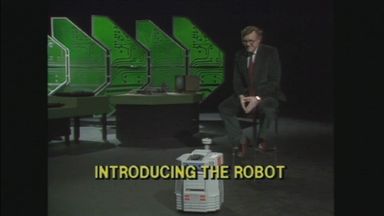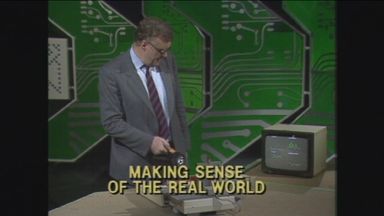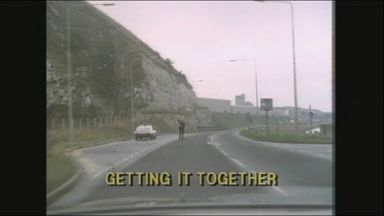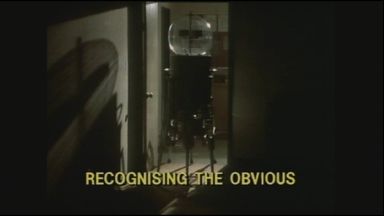Computers in Control
2. Making Sense of the Real World
Clips from this programme
Ian McNaught Davis shows light level, temperature, sound and distance sensors feeding information into the computer and displaying information on the screen
Duration: 01:09John Coll explores a real world sensing system used to locate London buses
Duration: 03:09A range of sensors are explored, each of which can be used as input devices to the computer
Duration: 02:55Analogue to digital conversion explained and demonstrated
Duration: 02:34A magnetic levitation system in Southampton University's wind tunnel allows models to be suspended without the supports interfering with the wind flow over the surfaces. Optical sensors measure the position of the model
Duration: 02:57Avoiding oscillations in a controlled system to prevent over-shooting
Duration: 02:38Setting thresholds in a system which can detect fog or an obstruction
Duration: 01:14Sensing the movement of a rotating shaft - using an optical shaft encoder or breaking a light beam
Duration: 00:42At Southampton University the movement of an modified hoist system is monitored by optical sensors to make it more accurate
Duration: 01:39Digitising the output from a microphone and explaining sampling rate. The sampling rate should be at least twice the maximum frequency
Duration: 01:14High speed sampling using an SLR camera circuit and a studio demonstration of high speed sampling of a flash gun
Duration: 01:29Computers in Control
1. Introducing the Robot
First broadcast: 2nd March 1984
Duration 24:42
An introduction to the world of robotics. 1: Introducing the Robot: A visit to the Chicago Robotics Exhibition shows how the computer has revolutionised these mechanical servants and even made domestic versions possible. IAN MCNAUGHT-DAVIS begins to look at how computers can sense what's going on round them and then control mechanical devices. Production DAVID ALLEN and ROBIN MUDGE
2. Making Sense of the Real World
First broadcast: 9th March 1984
Duration 24:45
An introduction to the world of robotics. Making Sense of the Real World. How can the computer detect such widely different things as the whereabouts of a London Transport bus, fog, the length of an electronic flash or the speed of a motor? IAN MCNAUGHT -DAVIS and JOHN COLL look at a wide range of sensors which are available on the market. Production DAVID ALLEN and ROBIN MUDGE
Now playing
3. Making Things Move
First broadcast: 16th March 1984
Duration 24:36
An introduction to the world of robotics. 3: Making Things Move: IAN MCNAUGHT-DAVIS continues his exploration of the principles behind the use of the computer in robotics by finding out how to make things move - even using a home micro. Production DAVID ALLEN and ROBIN MUDGE
4. Getting it Together
First broadcast: 23rd March 1984
Duration 24:23
An introduction to the world of robotics. 4: Getting it Together: IAN MCNAUGHT-DAVIS looks at some of the thinking behind more complex computer-controlled devices. Production DAVID ALLEN and ROBIN MUDGE
5. Recognising the Obvious
First broadcast: 30th March 1984
Duration 24:36
An introduction to the world of robotics 5: Recognising the Obvious : We see, hear and interpret the real world with ease. For the computer it's not so easy, but some robotic systems can identify objects or voices and act accordingly, and it's possible to mimic these on the home microcomputer. Production DAVID ALLEN and ROBIN MUDGE


















